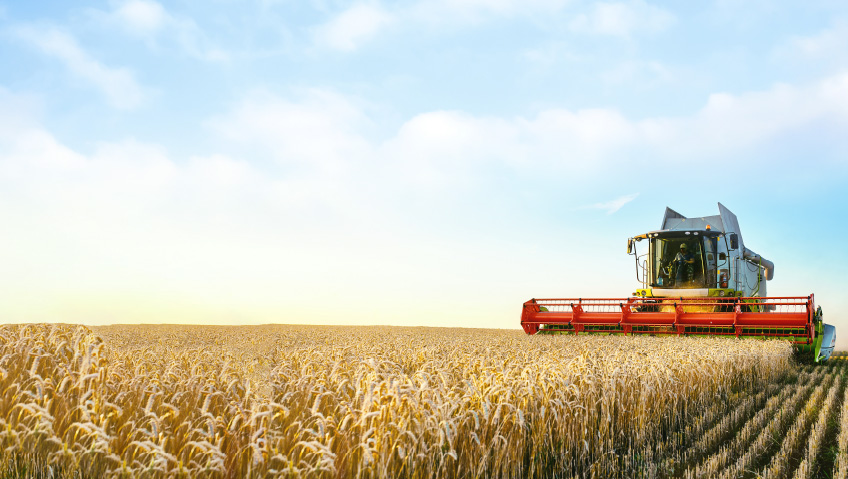International and interconnected systems can be rife with uncertainty. This is especially true of the global food supply, with challenges aggravated by the pandemic. Supply disruptions highlighted the fallibility of the global supply chain, as well as the lack of capacity of domestic and local food systems, particularly in Canada.
But the pandemic also highlighted the fragility of Canada’s domestic supply chains. The country was left scrambling when it came to personal protective equipment (PPE), hand sanitizer, and even vaccines, revealing a pressing need to grow our own domestic capacity across markets and sectors, particularly for necessities like food.
This is especially true with what’s happening in Ukraine, as an even greater threat is being posed to food security. While many in North America would dismiss this threat as something that will only impact Europe and Russia, the reality is that this conflict’s impact is global.
There’s a lot at stake in Ukraine, beyond the loss of human life. Chiefly, agricultural security: Ukraine is one of the world’s major producers of sunflower oil, meal and seed, corn, rapeseed, and soybeans, and is the world’s largest producer of wheat, with exports going to countries across Europe, Asia, the Middle East, and Africa.
Agriculture employs 14 percent of the population in Ukraine. The sector is valued at $27.8 billion and accounts for 41 percent of the country’s exports. However, the Ukrainian Nature Conservation Group (UNCG) estimates that it will not be possible to sow approximately one-third of the total land area in Ukraine, rendered inaccessible by the armed conflict. If these crops are abandoned, resources will be in short supply, which will inevitably cause rising prices and increased competition for them, stoking conflict among people and nations.
In 2021, almost six million people were food insecure in Canada alone, more than one-third of them in the province of Ontario where a sixth of households have reportedly been struggling to make ends meet. Globally, by 2050, two billion people are expected to be food insecure.
In the Greater Toronto Area (GTA), food bank usage has tripled since before the pandemic. Second Harvest, Canada’s largest food rescue charity, found that 60 percent more Canadians are expected to use food banks and other support programs in 2023 following a year that saw a 124 percent increase in usage.
What is unique about this situation is that many of these people are working. Costs are simply unsustainable as wages lag behind increases in costs due to inflation, and rising interest rates are making mortgages unmanageable, putting a strain on social safety nets like food banks and food pantries, organizations that simply can’t keep up with demand.
Canada is known for being a net importer and exporter of food, a consequence of being a signatory to NAFTA version one. From oil to pulses, instead of satisfying local demand with domestic supply, Canada often sends its commodities out for processing elsewhere. This is especially true of the agricultural sector, both conventional and organic.
Local food systems could be a big part of the solution when it comes to food security. Local or regional food systems are integrated and structured as collaborative networks that embrace sustainable food production, processing, distribution, and waste management principles into their operations, in addition to prioritizing the health of local economies, environments, and communities.
They come in many forms: community-supported agriculture (CSA), food shares, farmers markets, farm stores, pick-your-own (PYO), farm to table restaurants. Whatever form they take, they all share a common goal: contributing to sustainable local food systems and improving access to fresh, nutritious food.
Beyond improving access to locally produced food, these networks offer a local magnifier effect in that they promote social interaction and civic engagement, provide education and awareness, and improve access to healthful, sustainable food options. Plus, more of the dollars spent will remain in the local economy, often in support of small family-operated businesses.
In the context of global affairs today, this may be a highly responsible way that governments and communities can invest in themselves and meet their own needs. For instance, the recent lettuce shortage is something that could have easily been mitigated through local production. When droughts and a virus impacted California’s lettuce crops, Canada was left with little option but to wait for supply from producers in Arizona and Mexico, as domestic capacity was insufficient to meet the market’s needs. Where there was lettuce available, it was extremely overpriced, causing restaurants to remove it from their offerings.
Canada once produced its own lettuce and with advancements in vertical gardens, hydroponics, greenhouses, and other growing methods, there is no reason that something like greens couldn’t be grown on a local scale year-round to reduce the country’s reliance on imported foodstuffs. Local food is fresher, more nutritious and of a higher quality overall than imported foods that have been forced to ripen on a truck or an airplane. As such, a local food supply could do so much more than just reduce food insecurity on a basic level: it could contribute to a healthier population and environment.
Part of the reason locally grown foods offer better quality and taste is that when you eat local you’re eating in season, so the food is at the peak of its flavour and freshness. It will also contain more of the nutrients needed by the body at the time of harvest. Fresh foods can be preserved in a number of ways to be enjoyed year-round.
It’s also an investment in the environment. Beyond more sustainable, equitable, and holistic agricultural and employment practices, local suppliers need less fuel-intensive transportation to bring their products to markets. From farm stands to pick-your-own options, there’s a far smaller footprint associated with local food systems, which most of the time end up being organic.
The United Nations Food and Agriculture Association (FAO) defines organic agriculture as: “a holistic production management system which promotes and enhances agroecosystem health, including biodiversity, biological cycles, and soil biological activity. It emphasizes the use of management practices in preference to the use of off-farm inputs, considering that regional conditions require locally adapted systems.”
Organic is based on four principles: health, fairness, care, and ecology. Organic processes emphasize sustainable, cultural, biological, and mechanical methods in place of synthetic pesticides and agrochemicals. On the other hand, mass agricultural production relying on synthetic pesticides, fertilizers, and agrochemicals has contributed to land degradation which negatively impacts over 3.2 million people around the world.
The harsh reality, according to the FAO, is that agriculture is the largest employer in the world, but those who do 80 percent of the agricultural work also represent the majority of the global poor.
Given these figures, the focus not only needs to be on how to grow more food, but also on how to preserve the environment, ensure equitable employment standards for agricultural workers (many of whom are temporary foreign workers who work for inadequate pay in less than ideal conditions), and ensure that food is grown so as to provide optimal nutritional value, freshness, and quality.
Rightly, the figures presented should generate an ominous feeling of insecurity in all of us: even a developed country like Canada is susceptible to food insecurity, and in fact, many Canadians continue to fall into that condition each day.
The good news is that the country doesn’t have to be dependent on other nations for its food and other necessities. Canada encompasses much arable land that’s ideal for growing and though some parts of it will have a shorter growing season because of the colder months, there are technological advancements that should encourage the nation to grow more of its own food supply.
Investments in organic transition programs, funding to support sustainable agriculture, greater adoption of community gardens, and investment in infrastructure and food education could bolster domestic capacity and strengthen domestic supply chains.
This is particularly important in the context of the current economic environment: prices are rising with no sign of slowing and income is not keeping pace; a persistent housing shortage is being exacerbated by rising mortgage rates on already inflated housing prices; gas prices are climbing; and more and more people are having to choose between housing or sustenance.
The recent train derailment in East Palestine, Ohio also emphasizes the importance of preserving our fresh water supply—along with any resource that could be threatened and upon which the population relies—in addition to our food supply.
When resources are in short supply, geopolitical tensions and conflicts are also heightened, which means now is the time to invest in local capacity to reduce our reliance on an external supply chain that at any point could be interrupted. Besides, local food supplies are better for individual health, the wellbeing of the community, the strength of the local economy, and the environment.






